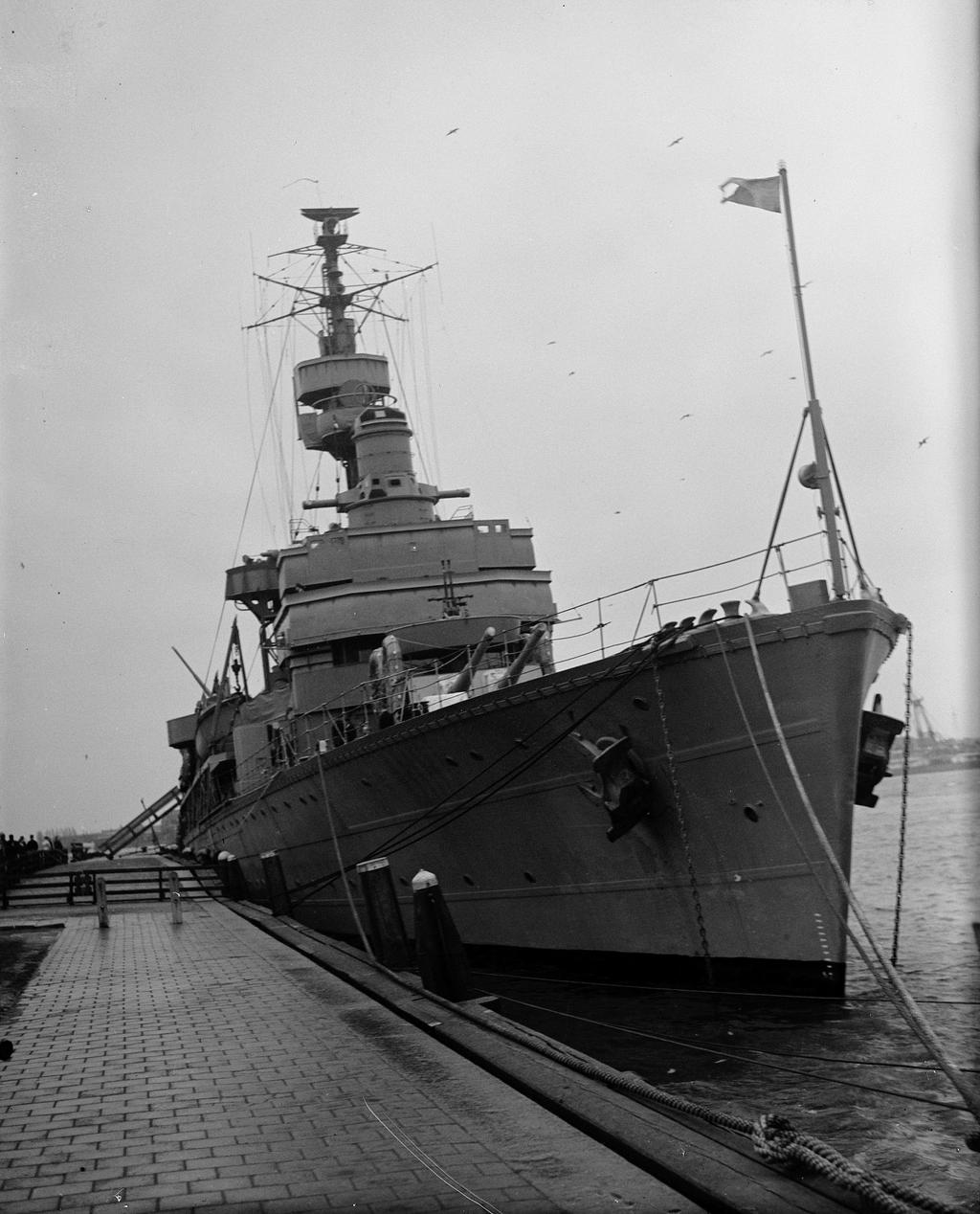Parkhaven Rotterdam, Netherlands 13 March 1949
National Archive, The Hague, Netherlands. Averink/Anefo Collection
The Dutch newspaper Het vrije volk dated 23 February1949 reported the intended unofficial visit between 12-16 March at Rotterdam. It was the first Swedish warship to visit the Netherlands after the Second World War. The edition dated Monday 14th March reported her arrival in the Parkhaven at 14:00 o’clock underway to her homeport Karlskrona after a 4 month voyage around Africa. Rotterdam was the 15th harbour she visited during this voyage. Another newspaper De Tijd dated 15th supplied more details adding that she made a training cruise for young midshipmen. After the return in Sweden was to be decided which of the midshipmen was stuibale for a naval career. She was converted into an anti aircraft cruiser and one of her officers stated that he was very proud on the Swedish navy. The 15th departed she. In the morning visited the Dutch vice admiral jhr. E.J. van Holthe, temporarily supreme command of the Dutch navy and chief of the naval staff.
The first design of this ship dated from December 1926 as an aircraft carrier able to carry twelve planes. However the 5,000 ton project as presented in January next year was thrown away when the navy demanded that she was in fact to be a hybrid carrier-cruiser-minelayer within a budget of 16.500,000 Swedish crones. A new design was made including the removal of one planned turret. Ordered on 7 June 1930, laid down at Götaverken, launched on 14 September 1933, commissioned 14 December 1934, rebuilt as an anti-aircraft cruiser in 1944, decommissioned 1956, sold in 1962 and broken up a year later. With a displacement of 4,600 tons were her dimensions 134,8 x 15,4 x 4,5 metres. Her steam turbines and four boilers allowed a speed of 27,5 knots. Her crew numbered 467 sailors and 60 men aircrew. The armament consisted of 2×2 and 2×1 15,2cm guns, 4-7,5cm anti aircraft guns, 4-,25cm anti aircraft guns and 6-53,3cm torpedo tubes. When used as an anti aircraft cruiser was the armament added with another 8-4,0cm guns. She carried before 1944 when used as an seaplane cruiser 6 Hawker Osprey planes although she was able to carry eight planes.


